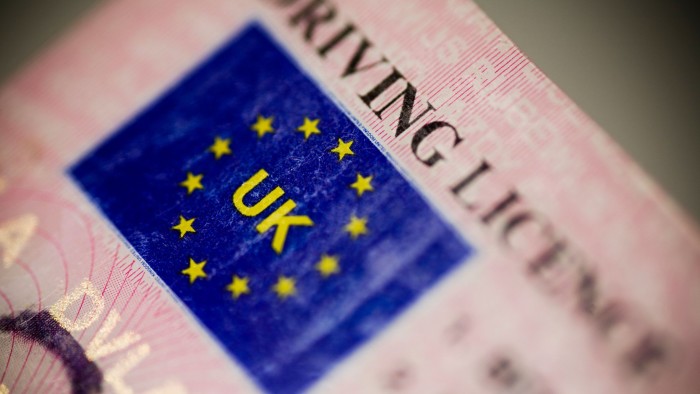The UK’s DVLA becomes ‘digital by default’

Roula Khalaf, Editor of the FT, selects her favourite stories in this weekly newsletter.
After two years on secondment in Swansea as chief technology officer at the UK’s Driver and Licensing Authority (DVLA), Iain Patterson is preparing to head back to Westminster.
He is returning to London to work in a role as yet to be revealed at the Government Digital Service (GDS), a unit of the UK’s Cabinet Office tasked with a mission to transform digital services offered by state agencies.
He looks back with clear satisfaction on his time at the DVLA, the body charged with maintaining registers of drivers in Great Britain and vehicles throughout the UK. There, he was asked to take an organisation with stuttering, backfiring IT systems through a profound overhaul and steer it into the fast lane of digital transformation.
At the heart of the challenge he faced when he first arrived in Swansea in late 2013 was a large and turbulent outsourcing project. The development and handling of DVLA’s IT systems had been outsourced for more than two decades and had passed through several IT providers’ hands along the way.
The most recent outsourcing contract, supplied by IBM and Fujitsu, was more than a decade-old. Infighting over contractual issues between the two vendors had led to a fractious court case, which they eventually settled in 2014. The contract had been due to expire in 2015 in any case. Yet in effect, all the DVLA’s on-site technology, service maintenance and digital delivery had been handled on its behalf for years by two outside providers who appeared at war with each other.
As a consequence, team morale was low, says Mr Patterson, and the opportunity of exploiting further digital advances was largely being missed. “Our in-house IT capability had been reduced to watchers and assurers, rather than doers. They used to be doers, but they’d forgotten how to do things and their view was they were being pushed around and had no control.”
Within days of his arrival, Mr Patterson decided to scrap the outsourcing model altogether and embark on a bold project of bringing the IT systems and relevant skills back under the DVLA’s direct control.
His rationale was straightforward: “You can’t transform what you don’t control. It was time for the DVLA to stand on its own two feet, drive digital transformation forward and be in control of its own destiny.”
If outsourcing had taken the DVLA up a dead-end street, it was time to execute a swift U-turn.

One of Mr Patterson’s first actions was to start arranging for the restoration of the necessary skills in house. The agency had two years before the outsourcing contract expired to design in-house systems. Another was to begin training IT staff who would be brought back in house, an area where he feels IBM and Fujitsu had not made sufficient investment.
As a result, when the IBM/Fujitsu contract ended in September 2015, Patterson and his team already had in place several elements required to execute the DVLA’s long-term digital ambition.
British motorists can now view their own driving record online, as can their insurance providers. They can buy, register and transfer personalised number plates online. And when the UK paper-based tax disc was abolished in October 2014, the DVLA had in place a system to allow users to pay their vehicle tax online and authorities ways of pursuing non-payment.
Rather than hand the tax-disc project to an IT consultancy to manage, says Mr Patterson, the DVLA’s IT team built this system themselves, in just seven weeks, using a cloud-based service.
“With digital transformation, you need to be your own systems integrator, or risk not having the ability to make the changes you really need,” he reasons.
But there’s more to digital transformation than simple self-reliance, he adds. What he hopes he has instilled at the DVLA is a philosophy he refers to as “digital by default”.
“My definition of this is that digital should be the preferred channel of choice for citizens because it’s so user-friendly and efficient and convenient for them to use,” he says. “The DVLA now has a self-sufficient team of people who are trained and empowered to deliver ‘digital by default’ and who are happy in their day-to-day work.”
Comments